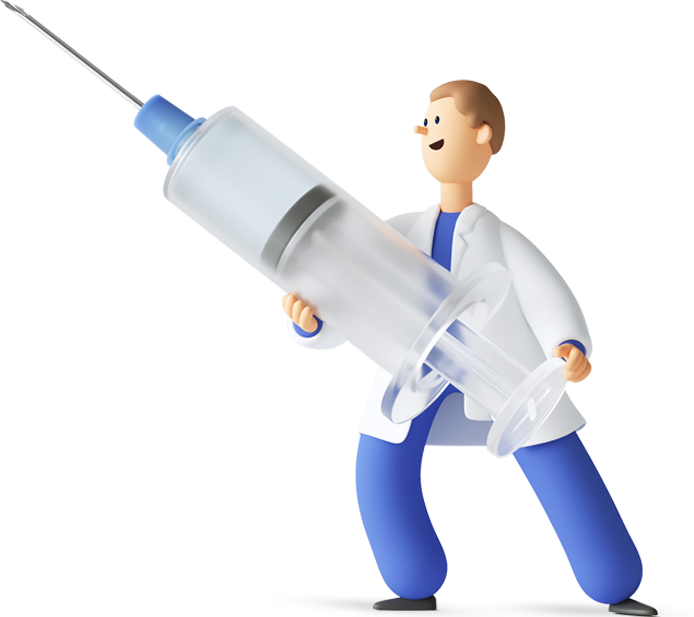
How to Reduce Migraine: Understanding Physiotherapy for Headaches & Migraines
Headaches and migraines can be debilitating, affecting your ability to function and enjoy life. While medication is a common treatment, physiotherapy for headaches and physiotherapy for migraines offers an effective, non-pharmacological approach to managing and reducing the frequency and intensity of headaches and migraines. In this blog, we will explore various physiotherapy techniques and exercises that can help alleviate headache and migraine pain. By incorporating these strategies into your routine, you can achieve better pain management and overall well-being.
Here are some common types of headaches:
- Tension Headaches: Often described as a dull, steady ache on both sides of the head, tension headaches can be triggered by stress, poor posture, or muscle tension.
- Migraines: Characterized by intense, throbbing pain, usually on one side of the head, migraines can be accompanied by nausea, vomiting, and sensitivity to light and sound.
- Cluster Headaches: These are severe headaches that occur in clusters or cycles, typically causing intense pain around one eye or temple and may be accompanied by nasal congestion and eye-watering.
- Sinus Headaches: Resulting from sinus inflammation or infection, these headaches cause pain and pressure around the forehead, cheeks, and eyes.
- Hormonal Headaches: Often experienced by women due to hormonal fluctuations, such as during menstruation, pregnancy, or menopause, these headaches can be migraines or tension-type headaches.
- Rebound Headaches: Also known as medication-overuse headaches, these occur when frequent use of pain medications leads to worsening headaches once the medication wears off.
Understanding Headaches and Migraines
Headaches and migraines are often caused by a combination of factors, including muscle tension, poor posture, stress, and vascular changes. Migraines, in particular, are more complex, involving neurological changes that can lead to severe, throbbing pain often accompanied by nausea, vomiting, and sensitivity to light and sound.
Physiotherapy Exercises for Migraines: How Physiotherapy Can Help
Physiotherapy for headaches and physiotherapy for migraines can play a significant role in managing these conditions by addressing underlying musculoskeletal issues, promoting relaxation, and improving overall physical health. Here are some key physiotherapy approaches:
1. Postural Correction
Poor posture, especially during activities such as sitting at a desk or using electronic devices, can lead to muscle tension and headaches. Physiotherapists can assess your posture and provide corrective exercises to improve alignment and reduce strain on your neck and shoulders.
Exercises:
- Chin Tucks: Sit or stand with your back straight. Gently tuck your chin towards your chest, creating a double chin. Hold for 5-10 seconds and repeat 10 times.
- Shoulder Blade Squeezes: Sit or stand with your back straight. Squeeze your shoulder blades together and hold for 5 seconds. Repeat 10 times.
2. Manual Therapy
Manual therapy involves hands-on techniques such as massage, mobilization, and manipulation to reduce muscle tension, improve joint mobility, and alleviate pain. Physiotherapists use specific techniques to target trigger points and tight muscles in the neck, shoulders, and upper back that contribute to headaches.
Techniques:
- Trigger Point Release: Applying sustained pressure to tight areas (trigger points) in the muscles to relieve tension and pain.
- Cervical Mobilization: Gentle movements to improve the mobility of the neck joints.
3. Stretching and Strengthening Exercises
Stretching and strengthening exercises can help reduce muscle tension, improve flexibility, and support better posture, which can all contribute to headache relief.
Exercises:
- Upper Trapezius Stretch: Sit or stand with your back straight. Tilt your head to one side, bringing your ear towards your shoulder. Hold for 20-30 seconds and repeat on the other side.
- Neck Flexor Strengthening: Lie on your back with your knees bent. Lift your head slightly off the ground, tucking your chin towards your chest. Hold for 5-10 seconds and repeat 10 times.
Techniques:
- Trigger Point Release: Applying sustained pressure to tight areas (trigger points) in the muscles to relieve tension and pain.
- Cervical Mobilization: Gentle movements to improve the mobility of the neck joints.
4. Relaxation Techniques
Stress and tension are common triggers for headaches and migraines. Physiotherapists can teach relaxation techniques to help manage stress and reduce headache frequency.
Techniques:
- Deep Breathing: Sit or lie down comfortably. Take slow, deep breaths, inhaling through your nose and exhaling through your mouth. Focus on relaxing your body with each breath.
- Progressive Muscle Relaxation: Gradually tense and then relax each muscle group in your body, starting from your toes and working up to your head.
5. Education and Lifestyle Modifications
Physiotherapists can provide education on lifestyle changes and ergonomic adjustments to prevent headaches. This includes advice on proper workstation setup, sleep hygiene, and regular physical activity.
Tips:
- Ergonomic Workstation: Ensure your computer screen is at eye level, your chair supports your lower back, and your feet are flat on the floor.
- Regular Exercise: Engage in regular physical activity to promote overall health and reduce stress.
Hydration and Diet: Stay hydrated and maintain a balanced diet to prevent dehydration and dietary triggers of migraines.
Conclusion
Physiotherapy for headaches and physiotherapy for migraines offers a comprehensive approach to managing and alleviating headaches and migraine pain. By addressing musculoskeletal issues, improving posture, incorporating relaxation techniques, and making lifestyle modifications, physiotherapy can significantly reduce the frequency and intensity of headaches and migraines. If you suffer from chronic headaches or migraines, consider consulting a physiotherapist to develop a personalized treatment plan that addresses your specific needs and helps you achieve lasting relief.
If you’re ready to take control of your headache and migraine pain, contact our team of experienced physiotherapists today. We’ll work with you to develop a tailored treatment plan that fits your lifestyle and helps you achieve better health and well-being. Schedule your appointment now and start your journey towards a headache-free life.
FAQs on Physiotherapy for Headaches and Migraines
Physiotherapy helps by addressing underlying musculoskeletal issues, improving posture, reducing muscle tension, and promoting relaxation. It offers non-pharmacological methods like manual therapy, stretching, and relaxation techniques to reduce headache and migraine frequency and intensity.
While physiotherapy may not completely cure migraines, it significantly reduces their severity and frequency by targeting triggers like poor posture, muscle tension, and stress. A physiotherapist can develop a tailored plan for better pain management.
Effective physiotherapy exercises include chin tucks, shoulder blade squeezes, upper trapezius stretches, and neck flexor strengthening. These exercises help improve posture, reduce muscle tension, and alleviate headache discomfort.
Yes, physiotherapy is a safe and effective treatment option for chronic headache sufferers. It focuses on non-invasive techniques and personalized exercises that address the root causes of headaches without medication.
Results can vary depending on the individual and the severity of migraines. Many patients experience improvements within a few weeks of regular physiotherapy sessions, while lasting relief may require consistent effort and adherence to a treatment plan.


